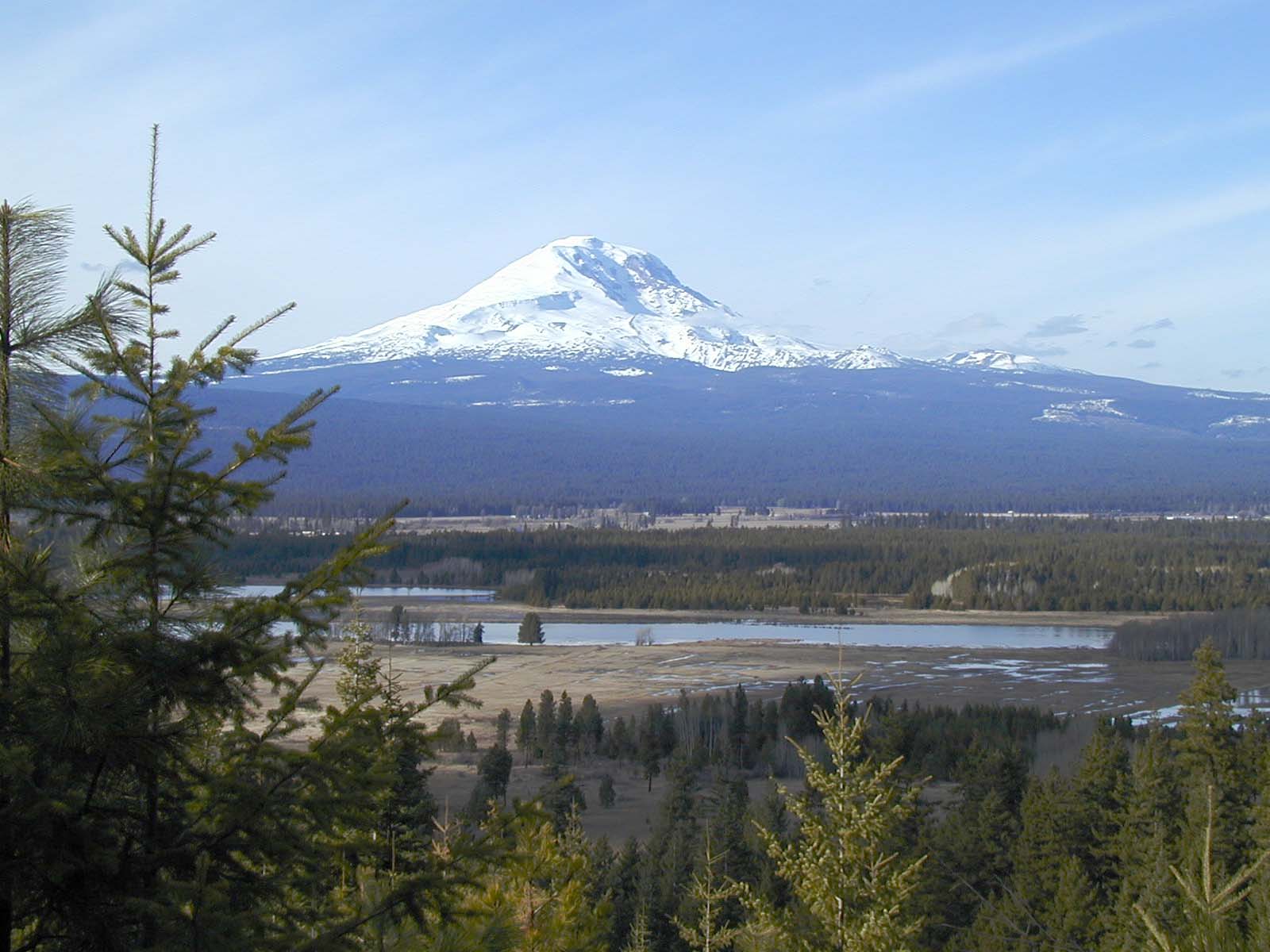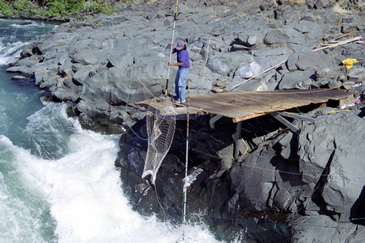 The
Klickitat River subbasin covers an area of 1,350 square miles in south
central Washington state. It begins in the Cascade Mountains below
Cispus Pass near 5,000 feet elevation and flows over 95 miles to join
the Columbia River at Lyle, Washington (RM 180.4), 34 miles upstream of
Bonneville Dam (elevation 74'). It is one of the longest undammed
rivers in the Pacific Northwest. The Klickitat Subbasin stretches west
to the Cascade Mountain crest, north and east to the basalt ridges and
plateaus of the Yakama Reservation, and south to the Columbia River Gorge.
The
Klickitat River subbasin covers an area of 1,350 square miles in south
central Washington state. It begins in the Cascade Mountains below
Cispus Pass near 5,000 feet elevation and flows over 95 miles to join
the Columbia River at Lyle, Washington (RM 180.4), 34 miles upstream of
Bonneville Dam (elevation 74'). It is one of the longest undammed
rivers in the Pacific Northwest. The Klickitat Subbasin stretches west
to the Cascade Mountain crest, north and east to the basalt ridges and
plateaus of the Yakama Reservation, and south to the Columbia River Gorge.
The landscape consists primarily of a basalt plateau with a total thickness of several thousand feet, which is incised by deep (700 to 1,500 feet), steep-walled canyons carved by the watershed’s network of streams and rivers. This geology has created several cascades and waterfalls on the mainstem and tributaries. Two notable waterfalls on the mainstem are Lyle Falls (RM 2.2) and Castile Falls (RM 64).

Forests cover three-quarters of the watershed. The Yakama Nation is the primary landowner of forested lands; the State of Washington and numerous private parties own the remaining forested land. The rest of the watershed is used primarily for pasture, orchards, dry-land farming and livestock grazing. Agricultural use is concentrated in the Glenwood/Camas Prairie area in the western part of the watershed and on the southeastern plateau. Part of the Klickitat subbasin is within the Klickitat Wildlife Area owned and managed by Washington Department of Fish and Wildlife; the southernmost part is within the Columbia River Gorge National Scenic Area, administered by the USDA Forest Service; the lower 10 miles of the Klickitat River have federal Wild and Scenic designation.
The Klickitat River subbasin supports two species of Pacific salmon, Chinook (Oncorhynchus tshawytscha) and coho (O. kisutch), as well as steelhead (O. mykiss). The following stocks are found in the Klickitat subbasin: spring Chinook; summer Chinook; early run fall (tule) Chinook; late run fall (upriver bright) Chinook; steelhead (summer and winter); and coho (primarily late run). Spring Chinook, summer and winter steelhead are known to have existed historically in the watershed. Steelhead are part of the Middle Columbia steelhead Distinct Population Segment (DPS), which has been listed as “threatened” under the Endangered Species Act (ESA). See a graphic of the run-timing of Klickitat Basin anadromous fish.
Pacific lamprey (Lampetra tridentata) is another anadromous species of interest in the Klickitat subbasin. Although historic abundance and distribution are relatively unknown, efforts are underway to collect information on the present distribution and status. Fine sediment delivery from Mt. Adams glaciers provides required rearing conditions during the ammocoete life stage of the species.
Resident fish in the Klickitat include rainbow (O. mykiss), westslope cutthroat (O. clarki lewisi), brook (Salvelinus fontinalis) and bull trout (S. confluentus). Naturally reproducing populations of rainbow trout are widespread within the subbasin. Westslope cutthroat trout were historically present, however, current distribution and abundance is severely limited. Brook trout were introduced into the Klickitat subbasin in the late 1970s and early 1980s, and may have impacted both cutthroat and bull trout populations.
Bull trout, found in some headwater tributaries, are listed as threatened under the ESA. The potential for hybridization and competitive interactions between brook and bull trout are of concern to fisheries managers in this area.
The Yakama Nation through the Yakama Nation Fisheries Resource Management Program is also active in the Southern Territories of the traditional Yakama territory.